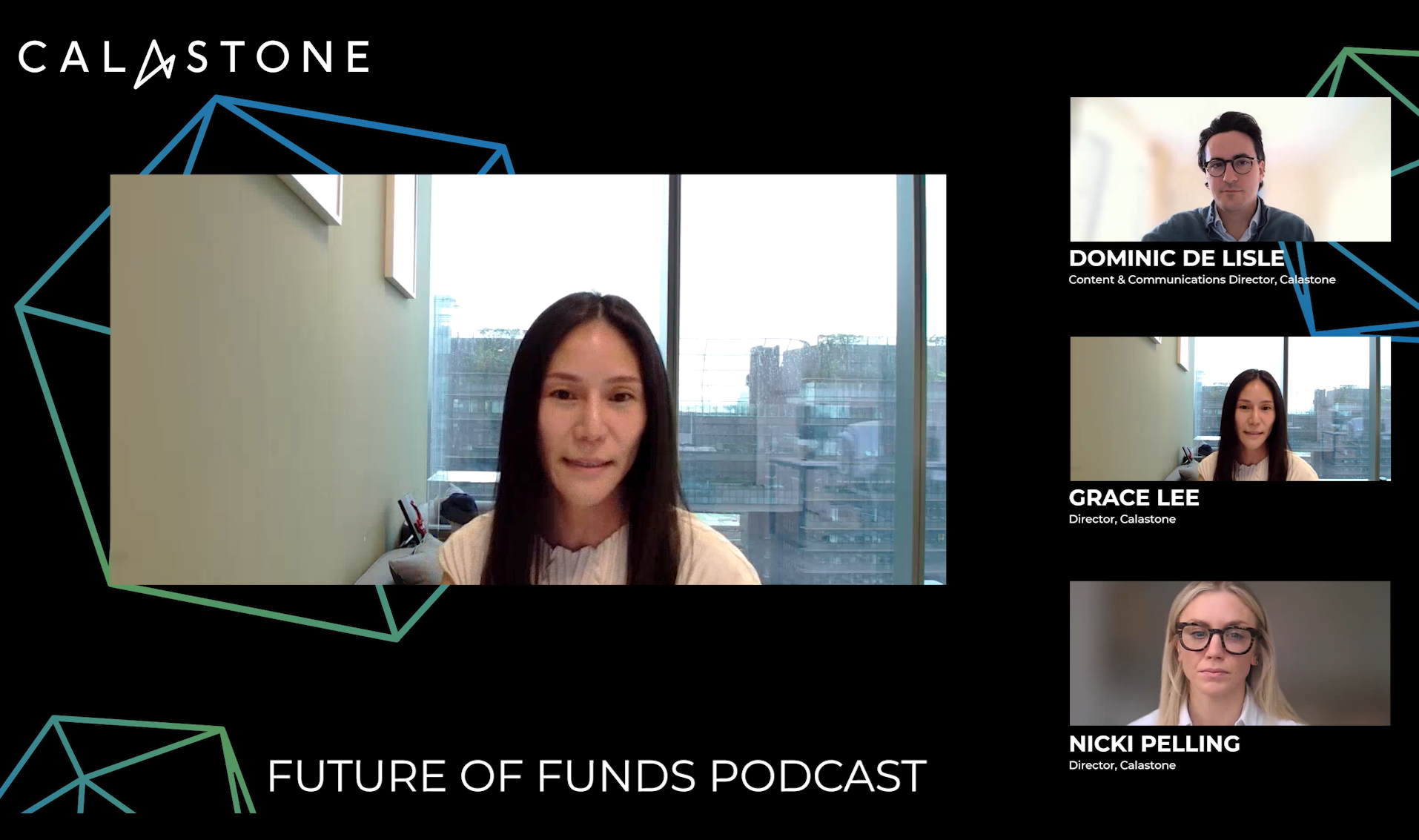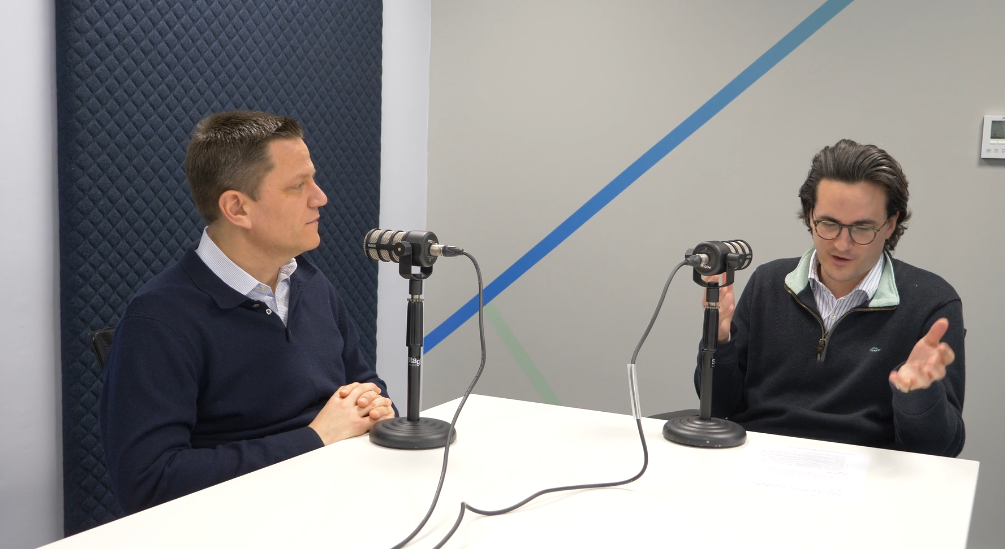The Investment Association’s recent report, UK Fund Tokenisation: A Blueprint for Implementation, marks a key milestone in the application of tokenisation and distributed ledger technology (DLT) to the funds industry in the UK – and another step towards the realisation of our vision at Calastone.
As founding members of the Technology Working Group of the Asset Management Taskforce, we have been working closely with the Financial Conduct Authority (FCA), HM Treasury, and our UK asset management clients to develop a blueprint for implementing the tokenisation of UK investment funds. The report details the first phase of the group’s work, outlining a shared vision for how tokenisation and DLT can be used in the funds ecosystem and proposing how to overcome the current challenges.
Stage one: The baseline model
The long-term vision is a funds industry whose full value chain is digital and recorded on DLT. To get there, the blueprint recommends a phased approach to fund tokenisation, starting with stage one: a baseline model that establishes the infrastructure for fund tokenisation in the UK funds market, which can be used within the existing legal and regulatory framework. This gives firms the opportunity and regulatory air cover to start piloting the technological change now, before tackling more complex approaches and use cases in future phases.
These tokenised funds – where an investor’s holding is represented not by units of a fund but by direct, transparent holdings of the underlying assets, or fractions of those underlying assets, in the form of tokens – are intended to provide a way to interact with increasingly digitalised capital markets, where both traditional and potentially new forms of asset class are issued and traded using DLT.
The baseline model is an authorised fund holding traditional assets, but managed using a private permissioned chain, which acts as the master record for the fund unit register. The fund would continue its usual off-chain settlement cycle and provide standard fund valuation points, whether on a daily basis or another timescale consistent with existing market practice. Crucially, the paper makes clear the distinction between native crypto assets, like Bitcoin, and the use of DLT within the existing regulations, something Calastone has championed for several years.
In other words, the only changes relative to a typical UK investment fund operating today are in the deployment of DLT. The baseline model remains consistent with existing mainstream funds, with the added efficiency of DLT for sales, redemption, and maintaining the register of holders. This a strong first step, working towards a future where the entire fund is built and administered on DLT, running digitally end-to-end.
Regulatory certainty
The baseline model’s key breakthrough is the regulatory certainty it brings. Fund tokenisation models adhering to this framework will be compliant, offering a secure environment for experiments within the existing regulatory regime. As long as the baseline conditions are met, real funds can operate under this new model, while firms also have the flexibility to develop their own tokenisation and DLT models, provided they conduct their own due diligence.
The report recognises that progress has partly been hampered by legal and regulatory uncertainty. However, there has been a recent surge of fund tokenisation and DLT activity in other jurisdictions. The EU’s DLT pilot regime is testing the suspension of existing legislation to stimulate the creation of solutions for trading and settling digital bonds and other DLT-based financial instruments. The Luxembourg regulator, the CSSF, has permitted firms to use DLT for their fund register. US fund providers are experimenting with public blockchain distribution. And the Monetary Authority of Singapore’s (MAS) Project Guardian is carrying out industry pilots on asset tokenisation in fixed income, foreign exchange, and asset management products, as part of which we developed a new tokenised investment vehicle in collaboration with MAS and Schroders.
With the output of this working group, the UK is learning from these experiments and ready to lead. Significant assets under management and international influence – almost half of the £8.8tn in assets managed in the UK are for international clients, with international firms playing a major role in the UK sector – and a market friendly to fintech innovation put it in a good position to develop a robust, outward-facing DLT ecosystem.
Stage two and beyond
By focusing on digitising the unit register as the first objective, the baseline model enables the industry to progress in the short term while setting the stage for the longer-term vision.
The ultimate aim is to have all three registers of investment funds – the client register, unit register, and asset register – accessible on-chain. This would enable a near-real-time record-keeping system shared across all parties servicing the fund, eliminating the need for participants to reconcile their data with each other independently. Investors would benefit from the resultant reduced administration costs and enhanced settlements realised by firms running and administering funds through a transformed, digitally enabled back-office infrastructure.
Phase two and beyond of the working group will develop and improve this baseline model, explore more complex use cases, and look to apply artificial intelligence and other technology to the asset management industry. As the report notes, the direction of travel will largely depend on what aspects firms want to explore: some might pursue global market access, interoperability, secondary markets, and more radical changes in the fund ecosystem, while others might move quickly to increase connections to the asset and client registers. We are particularly interested in how phase two might reimagine the role of the depository and fund accounting.
A blueprint for the future
This blueprint brings more than just a theoretical approach to tokenisation and DLT. It will foster innovation across the UK funds industry in a more surefooted way, providing a concrete, regulatory-backed foundation for new pilots, enhancing their credibility and likelihood of success.
This is something Calastone has been building towards for a long time. Our Digital Investments platform, running on our Distributed Market Infrastructure (DMI), enables private, permissioned information flow via a tokenised investment vehicle (via DLT), while also handling the fund accounting and transfer agent functions. Our network is both backward- and forward-compatible; clients can choose to either use their existing systems to distribute tokenised funds alongside traditional funds and assets or connect to digital custodians and other networks to distribute funds in this new way. This approach ensures a bridge between the traditional methods of fund distribution and the emerging digital method that this blueprint envisions. Moreover, with the greater international regulatory alignment the baseline model brings, it simplifies the use of the Calastone network for cross-border funds and international distribution.
This first phase of the group’s work is a major step in advancing tokenisation in the UK, offering a clear, staged approach for implementing tokenised investment vehicles in the funds industry – while providing momentum for the longer-term vision. This initial stage does not limit future innovation or interoperability. The next phases will allow firms to develop the baseline model in various ways, progressively moving towards our vision of an asset management industry running digitally end-to-end, enhancing personalisation in investment solutions, streamlining operations through automation and synchronised data, and offering more cost-efficient investment allocation for all investors.
As the report says, ‘it is now the ideal time for the funds industry and the UK authorities to take advantage of the opportunity to establish the fund tokenisation infrastructure for the UK funds market.’ We couldn’t agree more, and we’re proud to be part of the group making it happen.




















